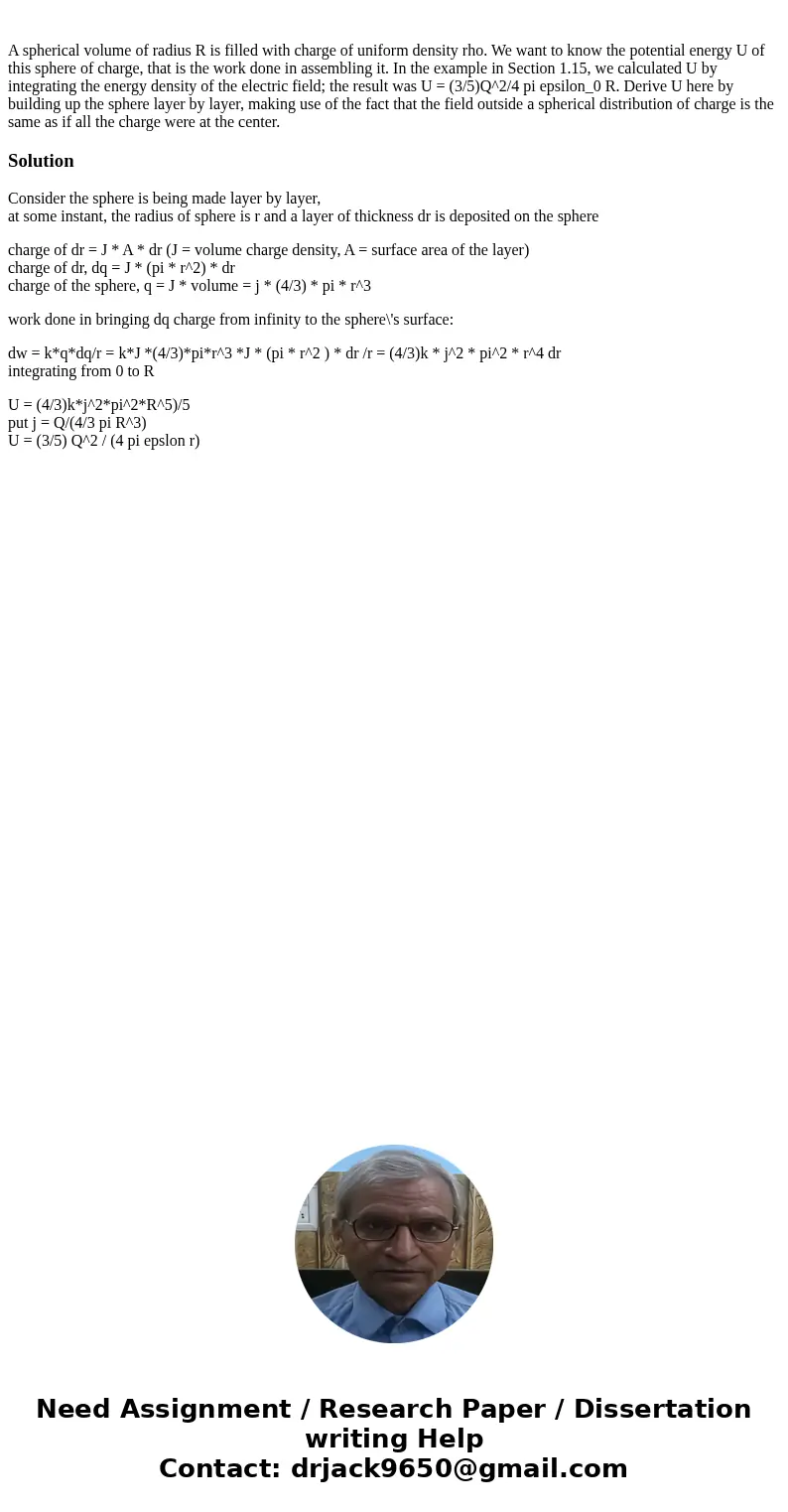A spherical volume of radius R is filled with charge of unif
Solution
Consider the sphere is being made layer by layer,
at some instant, the radius of sphere is r and a layer of thickness dr is deposited on the sphere
charge of dr = J * A * dr (J = volume charge density, A = surface area of the layer)
charge of dr, dq = J * (pi * r^2) * dr
charge of the sphere, q = J * volume = j * (4/3) * pi * r^3
work done in bringing dq charge from infinity to the sphere\'s surface:
dw = k*q*dq/r = k*J *(4/3)*pi*r^3 *J * (pi * r^2 ) * dr /r = (4/3)k * j^2 * pi^2 * r^4 dr
integrating from 0 to R
U = (4/3)k*j^2*pi^2*R^5)/5
put j = Q/(4/3 pi R^3)
U = (3/5) Q^2 / (4 pi epslon r)

 Homework Sourse
Homework Sourse